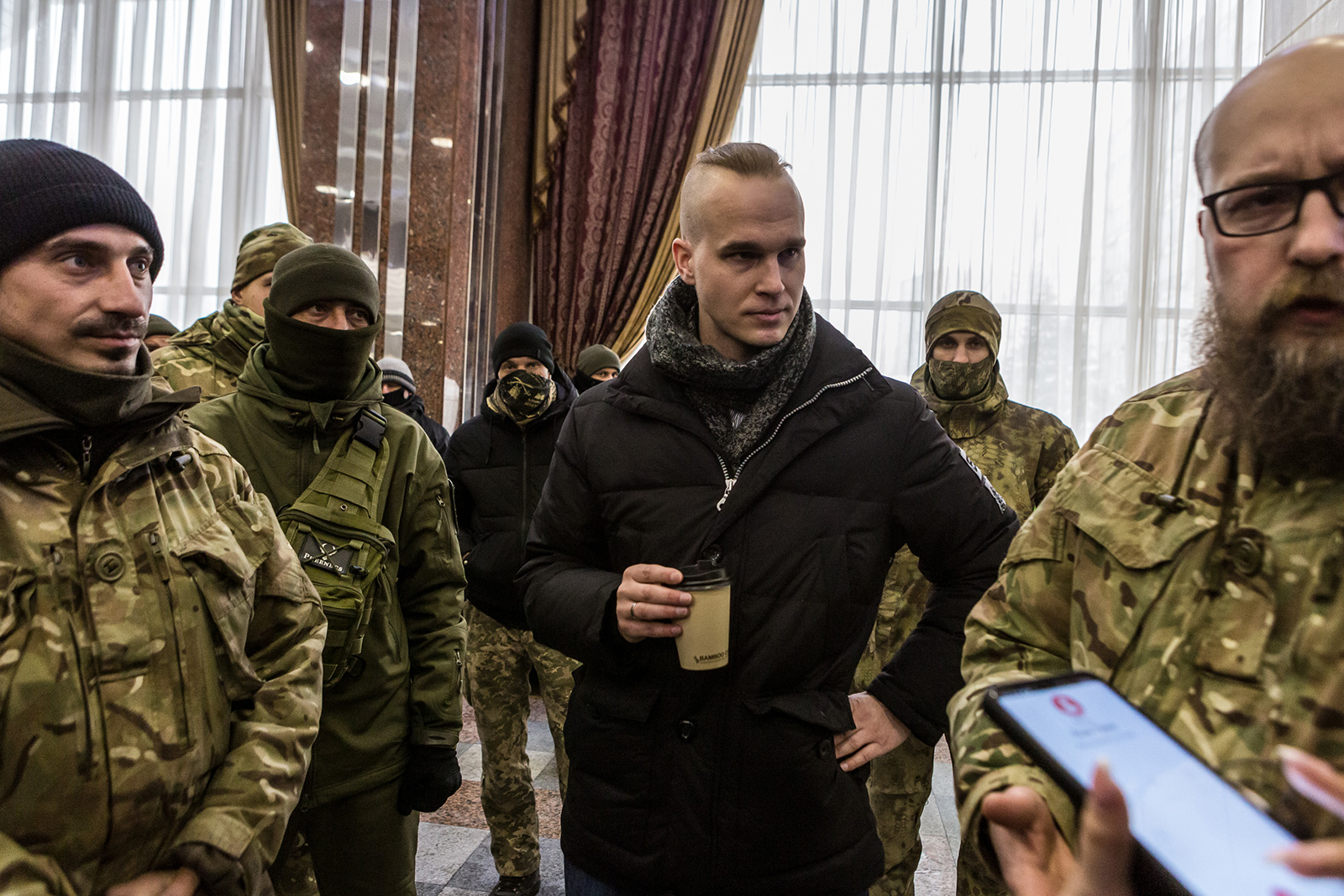The staccato crack of gunfire rang out across the cloudy night, startling residents of a modest enclave in southwestern Florida.
Lee County sheriff’s deputies, responding to a flood of 911 calls, raced to the area, but in the dark they were unable to find where the shooting had taken place. It wasn’t until the next morning, when employees of a nearby business complex called the Galleria discovered the crime scene.
Fifty-year-old Deana Lorenzo was found slumped over in the passenger seat of a red GMC truck, shot in her head, neck, and abdomen. Serafin “Danny” Lorenzo, 52, lay supine on the bloody pavement near the vehicle’s passenger side with bullet wounds to his head and lower body.
Gunmen had fired no fewer than 63 rounds in a matter of seconds. The Lorenzos never had a chance.
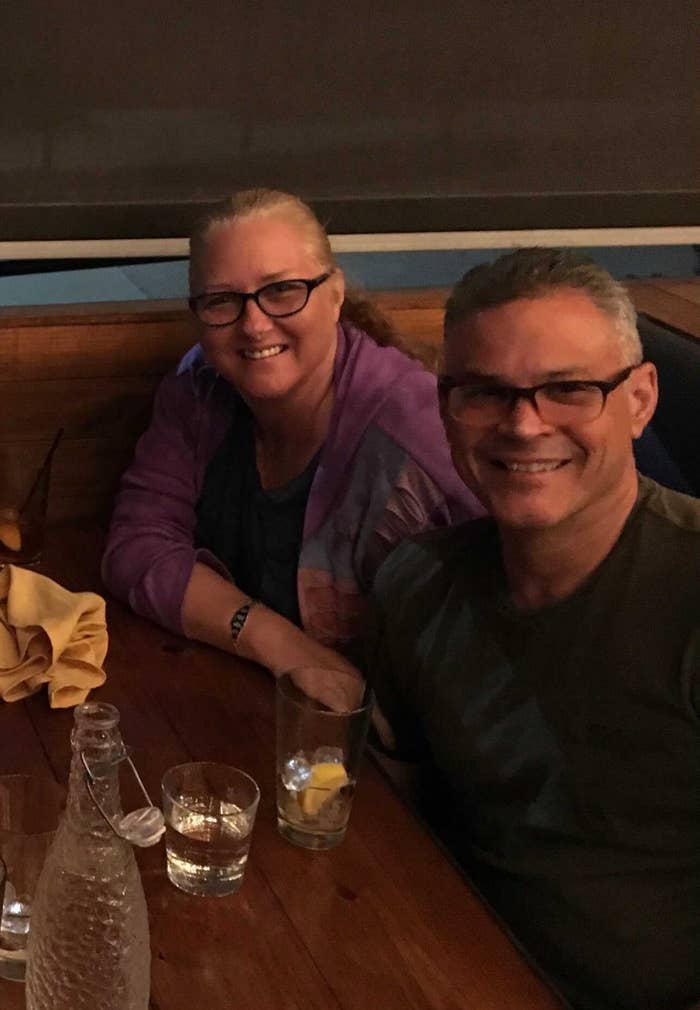
Just 20 hours before their deaths, the Brooksville, Florida, couple, both military veterans, believed they were on the verge of a big payday. They had answered a classified ad on the website Armslist.com, hoping to score five Glocks, an Uzi, and more guns and parts.
The listing said: “For Sale: Lots Of Guns. Leaving the country soon. Looking to sale [sic] all my guns as I can’t take them with me.”
The Lorenzos often made deals together, flipping houses or shopping for antiques. Serafin Lorenzo also bought and resold guns for profit, and he knew a good deal when he saw one. He wrote the seller, a man calling himself Jeremy Goldstein, to offer an Oris-brand watch or cash. Goldstein declined the watch.
“I have cash on hand,” Lorenzo replied, offering to pay $3,000 for the arsenal. He added, “Mine is a sure deal.”
There was no Goldstein, and there would be no deal, but the Lorenzos didn’t know this.
Instead, according to the FBI, Craig Lang, 30, and Alex Zwiefelhofer, 23, were lying in wait in the dark of the secluded, palm tree–lined business complex, the agreed-upon meeting point in the small Florida town of Estero.
The two men had served in the US military and acquired years of specialized training before they deserted. They later traveled to Ukraine to fight in an armed conflict with right-wing extremists, grew increasingly radicalized, and returned to the US with plans to get back on a battlefield in quick order. But they needed money. All told, US court records describe a string of violent exploits, crimes, and misadventures stretching across multiple states and four continents.
Experts on extremism have been following, with growing concern, the activities of mostly young far-right extremists with military backgrounds who seek out foreign wars to gain fighting experience. They’ve seen how these soldiers-for-hire get radicalized and then carry home what they learned in troubled, distant lands like Ukraine. The country has emerged as an important hub in the transnational white supremacy extremism network.
Far-right extremists see the war zone there as a laboratory where they can gain actual combat experience to bring back home. For a time, Lang thrived in this murky world of violence, but an examination of his life and the crimes he is accused of committing provide a stark example of the impact of one American’s radicalization.
Eastern Ukraine, an area roughly the size of West Virginia, is a land of extremes. Summers there can get hot enough to fry an egg on the street and winters cold enough to toss boiling water into the air and watch it transform into a frozen powder. Its vast steppes are blanketed in golden sunflowers and flecked by black dust from coal mines and hulking steel factories. And in the past seven years, some 4 million Ukrainians have tried to go on with their lives amid a brutal war.
It was there in April 2014, two months after the Moscow-friendly Ukrainian president was overthrown by revolutionaries in Kyiv, that a Russian special forces operation took hold. Disguised as a local uprising, it exploded into an all-out war that killed more than 13,000 people over the course of seven years. With just 6,000 combat-ready troops, Ukraine’s underfunded, underequipped, and unprepared military was no match for the much more sophisticated Kremlin-backed insurgency.
Dozens of volunteer paramilitary units, including hardened right-wing nationalists and neo-Nazis, leaped into the fray to halt the Russian advance. Among the most prominent: Right Sector, a group that answered to no state authority.
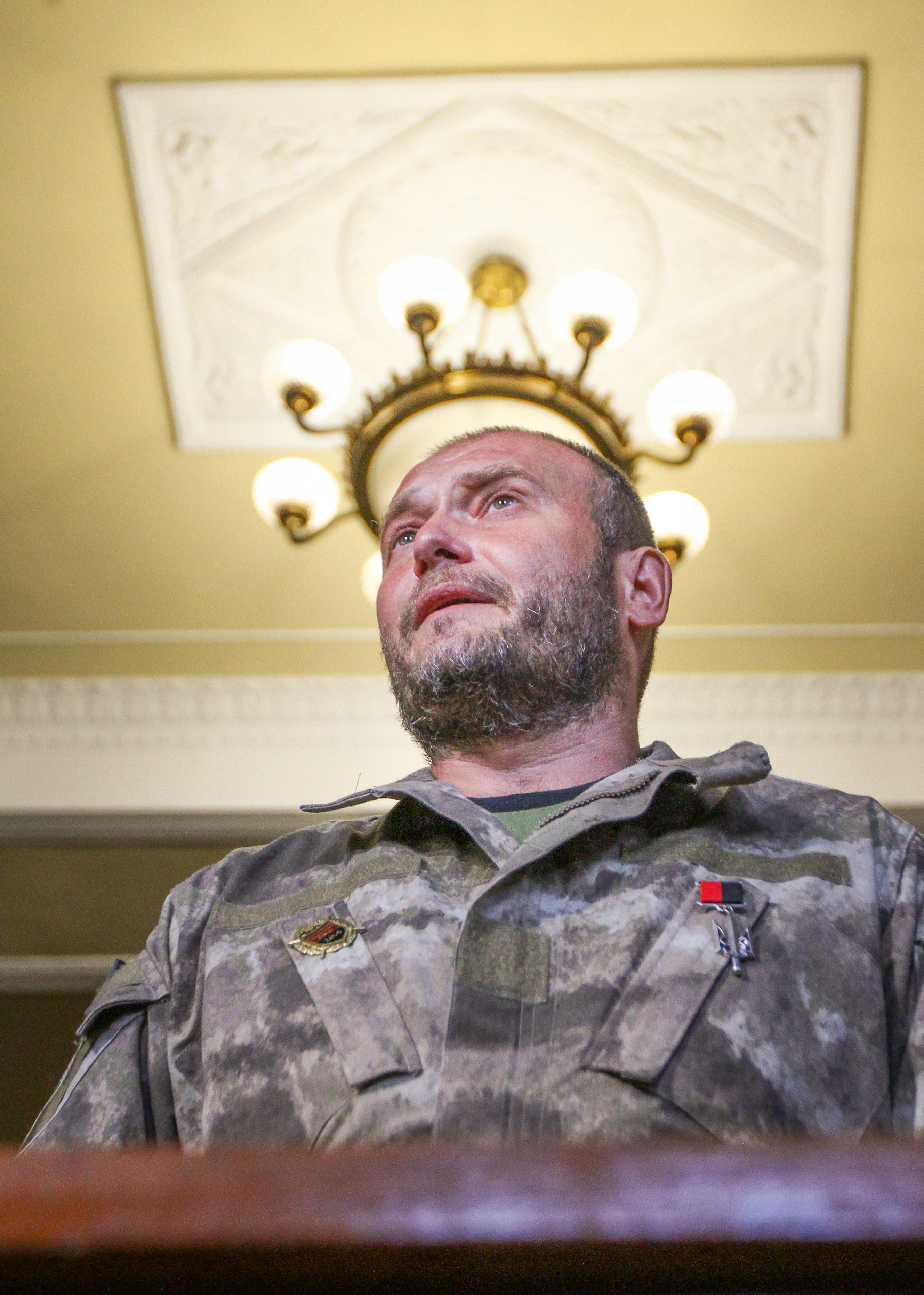
The battalion’s commander was Dmytro Yarosh, a stocky man with stubble and a slight lisp, whose goal was to build a country for ethnic Ukrainians. An avowed follower of Stepan Bandera, a Ukrainian Nazi collaborator who fought Soviet rule in the 1930s and 1940s, Yarosh inspired and mobilized upward of 3,000 Right Sector fighters who shared his vision.
Many of them boasted tattoos of swastikas, Black Suns, and other Nazi symbols, and they were often seen making the “Sieg heil” salute. Human rights groups and Western governments accused them of torturing combatants and civilians, notoriety that only raised the group’s profile.
Extremists began pouring into the country to join its ranks and those of other far-right paramilitary formations. Among them were roughly 40 Americans, according to interviews with seven of the men, research from experts, news reports, open-source information, and court records. Many of the Americans held far-right views and a propensity for violence, and were searching for a new beginning after a series of failures in the US.
Craig Lang was one of them.
Lang had joined the Army in 2008 to escape his troubled childhood in North Carolina, which included five years in a foster home, according to his father, Donald Lang. (In Ukrainian court, Craig Lang described assaulting a teacher.)
Friends say Lang told them the Army was his best way out. He served in the infantry from November 2008 to June 2014, completing tours in Iraq and Afghanistan, where his Humvee struck a roadside bomb. “I was in a position, a round came in, it exploded, and caused a brain injury,” Lang would later tell the Ukrainian court. “I have problems with vision in my left eye. I often have problems with headaches.”
Lang arrived in Ukraine in May 2015, seeking adventure and violence.
At the same time, his marriage was imploding. His wife, who’d been his high school sweetheart, filed for divorce. According to news reports, Lang believed she was seeing other men.
In 2013, he deserted his posting at Fort Bliss in El Paso, Texas, and drove nonstop to his wife’s home in North Carolina, with his military body armor, night vision goggles, claymore mines, and two assault rifles in tow. He wanted to kill his wife, he later told a journalist.
“Craig went frickin’ ballistic,” one Army colleague told me.
Lang’s wife was not harmed. Police had been alerted to his unsanctioned trip and arrested him at his father’s home. Donald Lang told a local news channel that his son had “developed PTSD” since returning from Iraq and Afghanistan.
He was jailed for several weeks after the incident and then returned to El Paso. On June 4, 2014, he was dishonorably discharged from the Army. A spokesperson declined to comment on the terms of the discharge (or to confirm his injuries), but it cost Lang his veterans benefits, health insurance, and gun license. On top of that, his wife finalized the divorce, took possession of his truck and home, filed a restraining order against him, and won custody of their child.
In seeking the restraining order, his wife wrote: “I fear for my safety and the safety of my two-and-a-half-year-old. Craig has demonstrated violent behavior directed towards me and others on many occasions.” She said he had previously tried to suffocate her with a pillow in front of their toddler, threatened to kill her, and sent her a text message about trying to kill himself.
After being discharged from the Army, he struggled to find work, taking odd jobs that often only lasted for weeks at a time, friends of Lang’s told me. In 2015, mired in debt and without any lucrative prospects, he came across an article about the war in Ukraine. It described the Ukrainian military’s struggle to hold back the bigger and stronger Russian army, and the foreign fighters streaming into the country to fight with far-right volunteer battalions.
He arrived in Ukraine in May 2015, seeking adventure and violence.
Lang said he was barely off the train in the war-torn region of eastern Ukraine when a member of Right Sector handed him a loaded AK-47.
The next morning, he was deployed to a position just a few miles from the Russia-controlled city of Donetsk, a key stronghold where some of the most intense fighting was taking place.
“I personally chose Right Sector because I thought they were the most active on the front line,” Lang told BuzzFeed News. (Lang and I communicated via social media and in person on at least four occasions over two years but he always declined my requests to be interviewed. However, he did speak briefly to a Ukrainian reporter BuzzFeed News sent to cover court proceedings in March.)
Without the ability to speak Russian or Ukrainian, Lang stuck close to the few English-speaking Ukrainians and a handful of other Americans and Europeans in the Right Sector.
An American volunteer who fought with Lang described him, two of his closest American companions, and two Austrians as “maniacs” who “got their rocks off” firing Kalashnikov automatic rifles or the battalion’s machine gun and shoulder-fired rocket-propelled grenade launchers. The five men called their close-knit squad “Task Force Pluto” after the Greek god of the underworld. An American fighter who wasn’t part of Pluto but hung around the men told me they had a “fetish for death and torture.”
A freelance German photographer visited the Right Sector base in early 2016. One of his images shows Lang — 6 feet 2 inches tall, with a craning neck, sapphire-blue eyes, light hair, and an untamed amber beard — holding up a photo of his daughter.
In another photo of Lang, a tattoo of the words “MOLON LABE” — an ancient Greek expression of defiance that translates to “come and take them,” a phrase that has been adopted by Second Amendment activists and conservatives in the US — is visible on his right forearm as he shakes the hand of a man with the same tattoo on his arm.
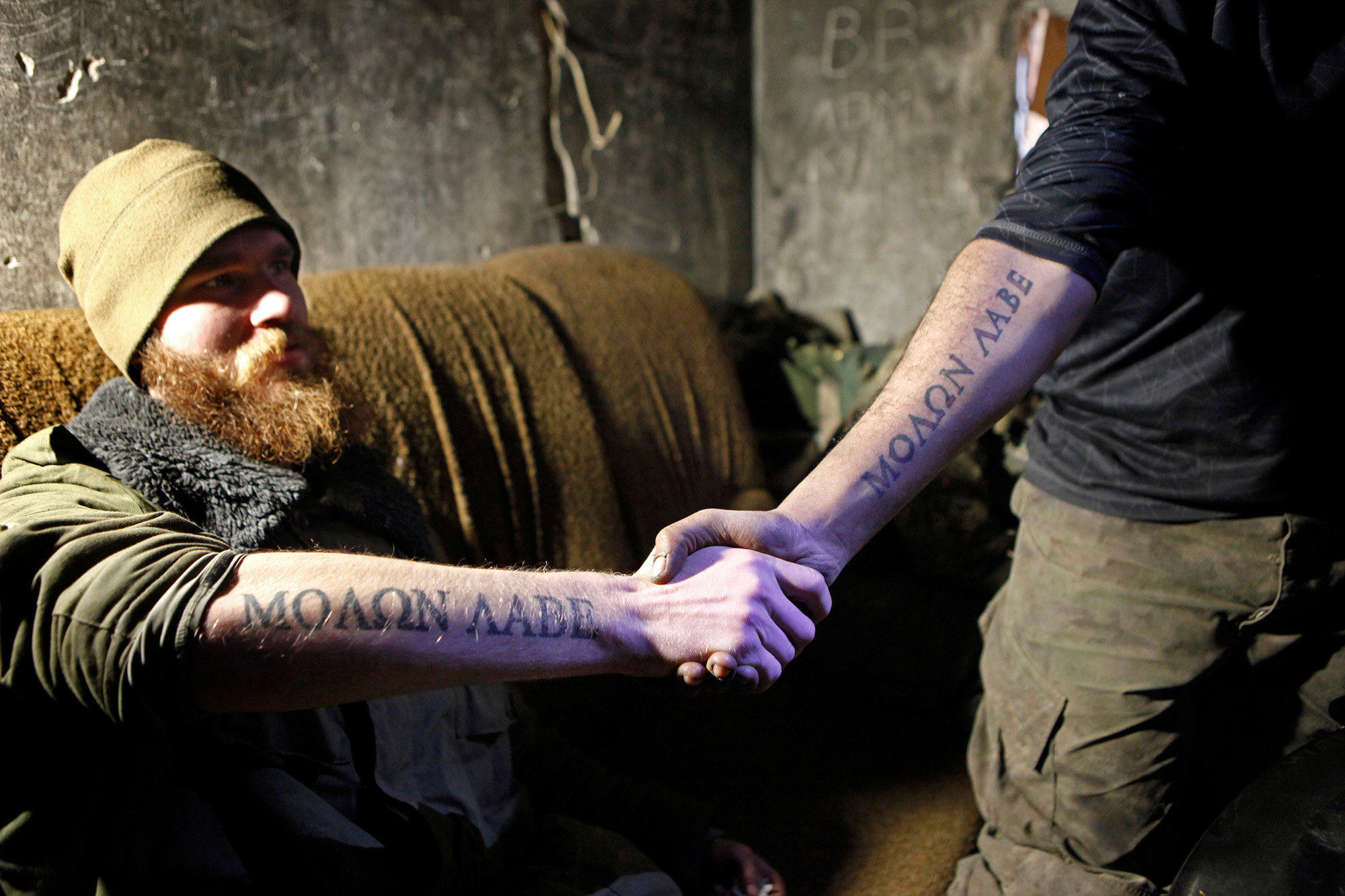
A third picture shows Lang beside a member of the unit who is giving a Nazi salute.
American fighters who knew Lang said that between gun battles, the men of Task Force Pluto would bring up their “troubling” political views over cheap Ukrainian booze and cigarettes — and that Lang’s politics and behavior grew more radical. He would often defy his commanders’ orders and attempt to provoke the enemy into a gunfight, they said. One of them said that Lang’s lack of discipline was largely why his two-month stint later as a contract soldier in Ukraine’s Armed Forces didn’t pan out.
Speaking with BuzzFeed News, Lang said he didn’t “have any extremist political views.”
But Damien Rodriguez, a Bronx native who previously fought with a far-right Ukrainian unit and crossed paths with Lang on the battlefield, recalled it very differently.
“Some of the things he said made me think, Dude, I don’t wanna be next to you right now,” he said. “He was telling me about starting a revolution” in the US. “It was crazy.”
Lang, he said, wanted to “watch the world burn.”
Lang liked to boast about “fucking people up” and doing “extrajudicial shit” in the war zone, especially to enemy combatants captured by Right Sector.
David Plaster, another American who fought in the ranks of Ukrainian volunteer battalions with Lang, said in an interview that Lang liked to boast about “fucking people up” and doing “extrajudicial shit” in the war zone, especially to enemy combatants captured by Right Sector.
During his downtime, Lang spent hours responding to Facebook messages he received from other Americans who were hoping to fight alongside far-right extremists. Those prospects had seen him in interviews with Ukrainian and Western media. Footage of him firing a machine gun or standing beside artillery made him into a sort of folk hero among Ukrainians and wayward young men back home in the US.
According to Brian Boyenger, an Iraq War veteran who served as a sniper in Ukraine from 2015 to 2016 alongside Lang in the country's Armed Forces, Lang was the first point of contact in Ukraine for many “lost boys” who came to the country to fight.
Boyenger said he acted as an unofficial human resources manager of sorts, interviewing dozens of the fighters Lang had recruited. He turned many of them down, he said, for being “radicals” or “too eager” to gain real-life combat experience.
One of the prospects Boyenger rejected was a South Carolina native named Jarrett William Smith, who told me in a letter that he was attracted to the neo-Nazi imagery of Ukraine’s far-right battalions and had reached out to Lang while still in high school. Smith never made it to Ukraine, although he still hopes to go there and fight someday. Instead, he enlisted in the US Army and in September 2019 found himself facing serious federal charges for allegedly helping far-right extremists. Prosecutors said he sent recipes for homemade napalm on the social networking site Telegram and discussed plans to assassinate former House representative Beto O’Rourke and blow up the offices of CNN. He later pleaded guilty and was sentenced to two and a half years in prison, where he now resides.
The roughly 40 Americans who are known to have gone to Ukraine range in age from their early twenties to mid-fifties, and some have ties with far-right extremist groups in the US. A few with far-left affiliations have joined Russia-backed forces.
In October, I reported that Kyiv deported two American men who were tied to Atomwaffen Division and the Base, stateside neo-Nazi groups linked to violent crimes including murder and alleged plots to attack US nuclear facilities. At least one of them has since returned to the US.
Ukrainian security services told me that the Americans had tried to set up a local branch and connect with members of the country’s Azov Battalion, a group of far-right radicals and neo-Nazis that has been accused of torture and war crimes. (The group is now officially a part of Ukraine’s National Guard and has been renamed the Azov Regiment.)
Kacper Rekawek, a researcher at the nonprofit Counter Extremism Project and the author of a 2020 report on right-wing foreign fighters in Ukraine, told me that European intelligence agencies began taking notice years ago of extremists going to the country. Italy, Spain, Czechia, and the United Kingdom are among several countries that have arrested and prosecuted citizens who fought with groups in eastern Ukraine and returned home.
“These guys project their fantasies onto the war in Ukraine,” Rekawek said. “They say, ‘We went there because we thought we could live our lives the way we want to.’ They’re like ISIS in that way.”
Mollie Saltskog, a senior analyst who tracks foreign fighters at the Soufan Group, a New York–based security consultancy, worries about what happens when they leave the war. “The question is, what do they want to do after leaving Ukraine? Some want to make more of a lateral career move and become a career mercenary — but then the people who go back to Europe and the US, how are they using their newfound skill and newfound network?”
“These guys project their fantasies onto the war in Ukraine. They say, ‘We went there because we thought we could live our lives the way we want to.’ They’re like ISIS in that way.”
Nathan Sales, the former ambassador-at-large and coordinator for counterterrorism at the State Department, told me last summer while still in his post that the US had been monitoring reports of American white supremacist fighters in Ukraine “very closely.”
He pointed to comments by FBI Director Christopher Wray, who said in October 2019 that his agency was watching “racially motivated violent extremists connecting with like-minded individuals online certainly, and in some instances … travel[ing] overseas to train.”
That tracks with what four American fighters told me about their encounters with federal agents when they returned to the US. They said they were pulled aside in airports and questioned about their motivations for fighting in a foreign war, their affiliations with Ukraine’s far-right extremist groups, and their personal beliefs and ideologies. But the intervention didn’t have much effect.
“They question me: What was I doing? Blah blah blah,” one American fighter told me. “I tell them I don’t have anything to hide. Then they let me go. Every time.”
By summer 2017, when the war in Ukraine had cooled to a low simmer, Lang told other American fighters that he was growing bored of the monotony of trench warfare. Alex Zwiefelhofer, an American fighter who joined the Right Sector after deserting the US Army and connecting with Lang online, was getting restless too. According to US court documents, they hatched a plan that June: travel to East Africa to fight al-Shabaab, a jihadist terrorist organization allied with al-Qaeda.
Claiming to be journalists, the two men made it only as far as the Kenya–South Sudan border before the South Sudan People’s Defence Forces reportedly detained them. They were arrested for trying to cross without proper documents and thrown in a Nairobi jail for almost two months.
“So, week six of African jail. just contracted cholera,” Zwiefelhofer complained in a July 2017 Facebook post he managed to publish from a phone he said he smuggled in.
Lang’s passport was marked by US authorities with a black stamp, rendering it invalid, due to unpaid child support. Weeks later, the two of them were deported back to the US; Lang was sent to Surprise, Arizona, where his mother lived at the time.
Meanwhile, Zwiefelhofer ran into more serious trouble. While Customs and Border Protection agents interrogated him at the airport in Charlotte, North Carolina, about his foreign military exploits in Ukraine and South Sudan, they discovered child sexual abuse imagery on his phone, court records show. He was booked into jail on charges of sexual exploitation of a minor before being released on bond and fleeing to Wisconsin. That case is still pending.
As the months went by, Lang and Zwiefelhofer grew restless again. The pair craved the exhilaration they got from fighting overseas, their acquaintances told me. They started talking about returning to Ukraine or going to Venezuela to fight alongside anti-government rebels who were trying to overthrow socialist President Nicolás Maduro.
Beginning in March 2018, they exchanged Facebook messages and hatched plans to meet in Miami, according to court records.
And from there, plans for the next battlefield.
After Lang and Zwiefelhofer arrived in Miami by bus on April 5, 2018, they did what many tourists who come to South Florida do: don tropical shirts and snap selfies.
Inside a La Quinta Inn in Miami, nestled between a Denny’s, a Wendy’s, and a McDonald’s near the city’s international airport, Lang slipped into a button-up shirt patterned with navy and light blue hibiscus flowers. Zwiefelhofer put on a shirt adorned with yellow, pink, red, and green martini glasses. Then the pair took selfies against the purple, black, and white decor of room 210.
But they didn’t pack like typical tourists. Together, they brought at least four semiautomatic Glock pistols, one high-powered rifle, and hundreds of bullets.
In the weeks before, court records show, Lang and Zwiefelhofer had discussed smuggling guns and ammunition to Miami, buying body armor at a military surplus store, committing robberies, hot-wiring and stealing a yacht, and escaping to South America or Ukraine. According to the FBI, the pair said they might “kill a yacht owner if necessary” to make their getaway.
What the men did next in room 210, with the fluorescent light of fast-food signs glinting through the curtains, was like something from a Coen brothers film. After examining Lang’s laptop, the FBI found that the two men had googled “classified Miami handguns,” “hotwire boat ignition switch,” and “how to smuggle myself to South America.” And then they watched a scene in a Hollywood action movie where shooters ambush passengers in a sitting vehicle.
On April 7, authorities say, the men used Lang’s laptop to post a classified ad on Armslist.com under the name Jeremy Goldstein, offering to sell five Glock handguns, one Star pistol, one Uzi, and four upper and four lower receivers for AR-15 assault rifles.
A little over 24 hours later, at 12:10 a.m. on April 9, 2018, Serafin Lorenzo texted with the man he believed was Goldstein to inquire about the firearms.
The next evening, authorities say, Lang and Zwiefelhofer drove west in a rented Toyota Corolla on Interstate 75. Better known as Alligator Alley, the flat and unswerving 80-mile stretch of pavement cuts through the Everglades. Around 10 p.m., they arrived at the Galleria complex in Estero.
Serafin Lorenzo had told a family member the night before how excited he was about the deal, saying he thought $3,000 for the haul was a steal and he could sell it all for more than twice that much, the family member told me in an interview.
The family member said they expressed concern about the arrangement, telling Serafin that it didn’t sound right. The family member still recalls his reply: “This is a legit thing. Trust me.”
At 10:44 p.m., Serafin Lorenzo backed the couple’s red GMC truck into a parking spot opposite a church and sent a text to the number for Goldstein saying he and Deana Lorenzo were there. Less than 10 minutes later, the Lorenzos fell under a deadly hail of bullets. The gunmen ambushed them from the rear and passenger side; federal investigators noted how similar this was to the movie scene Lang and Zwiefelhofer had watched.
Red-hot rounds pierced the victims’ bodies, penetrated the trunks of palm trees across the parking lot, and blew through office windows.
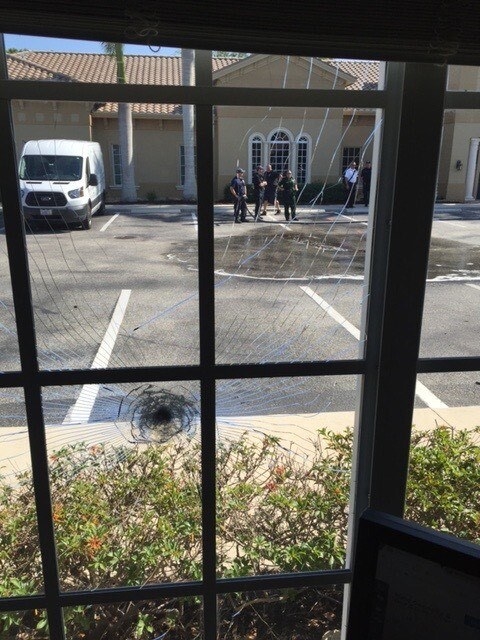
According to the Lorenzo family member, Deana was known to carry a pink pistol. A law enforcement official told that relative that Deana shot at the assailants at least once.
When the sheriff’s deputies arrived and cordoned off the scene the next morning, they found the Lorenzos’ bodies, a truck shot full of holes, Serafin’s cellphone and brown leather wallet, and a bill of sale for the firearms transaction he thought would take place.
The $3,000 cash Serafin Lorenzo withdrew was gone.
Authorities said Zwiefelhofer’s cellphone records and the rented Corolla’s GPS system showed the pair had fled the same way they had come — through Alligator Alley, vanishing into the darkness.
After the killings, Lang and Zwiefelhofer were on the run — but not to South America as they had planned.
Instead, they traveled to Washington state, where Lang sold 50 firearm magazines, approximately 550 rounds of rifle ammunition, and several rifle components — items that the FBI said Lang had previously offered to Serafin Lorenzo — for $1,500 at Palace Jewelry and Loan, a Seattle pawnshop, according to court documents and an extradition request for Lang.
Afterward, authorities said, Lang went to North Carolina to stay with his mother and Zwiefelhofer headed home to Bloomer, Wisconsin.
In August 2018, four months after the Lorenzos were killed, Lang contacted Matthew McCloud, a fellow Army veteran he knew from his time at Fort Bliss. McCloud, who described for me watching Lang shoot an AK-47 at life-size posters of then-president Barack Obama and Miley Cyrus while stationed in Texas, said that Lang first reached out to him before the Lorenzo killings. Lang convinced him to come to Miami to meet him and Zwiefelhofer and then travel abroad to fight.
But McCloud got picked up for check fraud in Arkansas before he could leave for the rendezvous. Upon his release, he was able to meet up with Lang in North Carolina and pay two other men for documents that would help him and Lang establish new identities to travel overseas. The guns advertised in the Armslist post were part of the payment, McCloud told me and federal agents. He said Lang failed to get a passport because he filled out part of the application incorrectly and got “spooked” when the worker processing the paperwork began questioning whether he was who he claimed to be.
McCloud told me he flew from Atlanta to Kyiv, alone, on Sept. 17, 2018, but he didn’t like it there. Within days, he was arranging to leave and meet up with Lang, who had decided to go ahead with his plan to go to South America, even without a new passport.
On Sept. 24, according to McCloud and federal authorities, Lang smudged the black stamp in his passport — put there by US authorities when he was deported from Kenya — and used the canceled document to cross on foot from El Paso into Juárez, Mexico. Later that day, Lang caught a flight to Mexico City. He hopped on another to Bogotá, Colombia, the following day.
McCloud followed him to Bogotá on Oct. 12, announcing his arrival on Facebook with a photo of the two of them wearing matching black-and-tan outfits on a church square beneath a darkened sky. But McCloud immediately got cold feet about fighting the Venezuelan government. On Oct. 22, he crossed into Texas via Mexico and was arrested by the US Marshals Service.
“He has done so many good things in all aspects of life. He is also very troubled because of war. It caused him to do some very unspeakable things.”
McCloud told investigators that he had decided to abort the plan because he “did not want to kill people.”
In custody, he turned against Lang. He informed FBI agents that Lang had told him that he and Zwiefelhofer had killed the Lorenzos and that they “unloaded both of their clips into the dude’s red truck.”
McCloud also told the FBI that Lang had boasted about killing a “boat captain” — who was supposed to take him and Zwiefelhofer from Miami to South America — in a conflict over money. Local and federal authorities declined to answer my questions about that alleged killing. And I wasn’t able to find a killing in the Miami area matching McCloud’s description.
McCloud, who later pleaded guilty to conspiracy to commit passport fraud, described Lang to me as someone struggling with “demons.” He said in an interview that he feared for his safety after cooperating in the case against Lang.
“He has done so many good things in all aspects of life,” McCloud said. “He is also very troubled because of war. It caused him to do some very unspeakable things. He confided in me some very gruesome details. I can’t really elaborate on what I know for legal and safety reasons.”
Lang, for reasons that are still unexplained, never made it to Venezuela either. Instead, he headed back to Ukraine.
Zwiefelhofer, meanwhile, was enjoying his freedom back in Bloomer, where he lived with his father.
“Feeling cute, might join and ultra nationalist militia or make the army times later, idk,” reads a photo he posted on Instagram on April 14, 2019, which shows him wearing reflective sunglasses and shooting earmuffs with a pistol in his hand at what appears to be a gun range. “Its just a meme guys I swear,” he wrote in the caption.
Little did he know, federal authorities were on his trail.
Weeks earlier, Zwiefelhofer, who still had outstanding charges against him related to child sex abuse materials, had filled out a form with false information while trying to buy a gun, the FBI said. Law enforcement officers swooped in and arrested him on May 23.
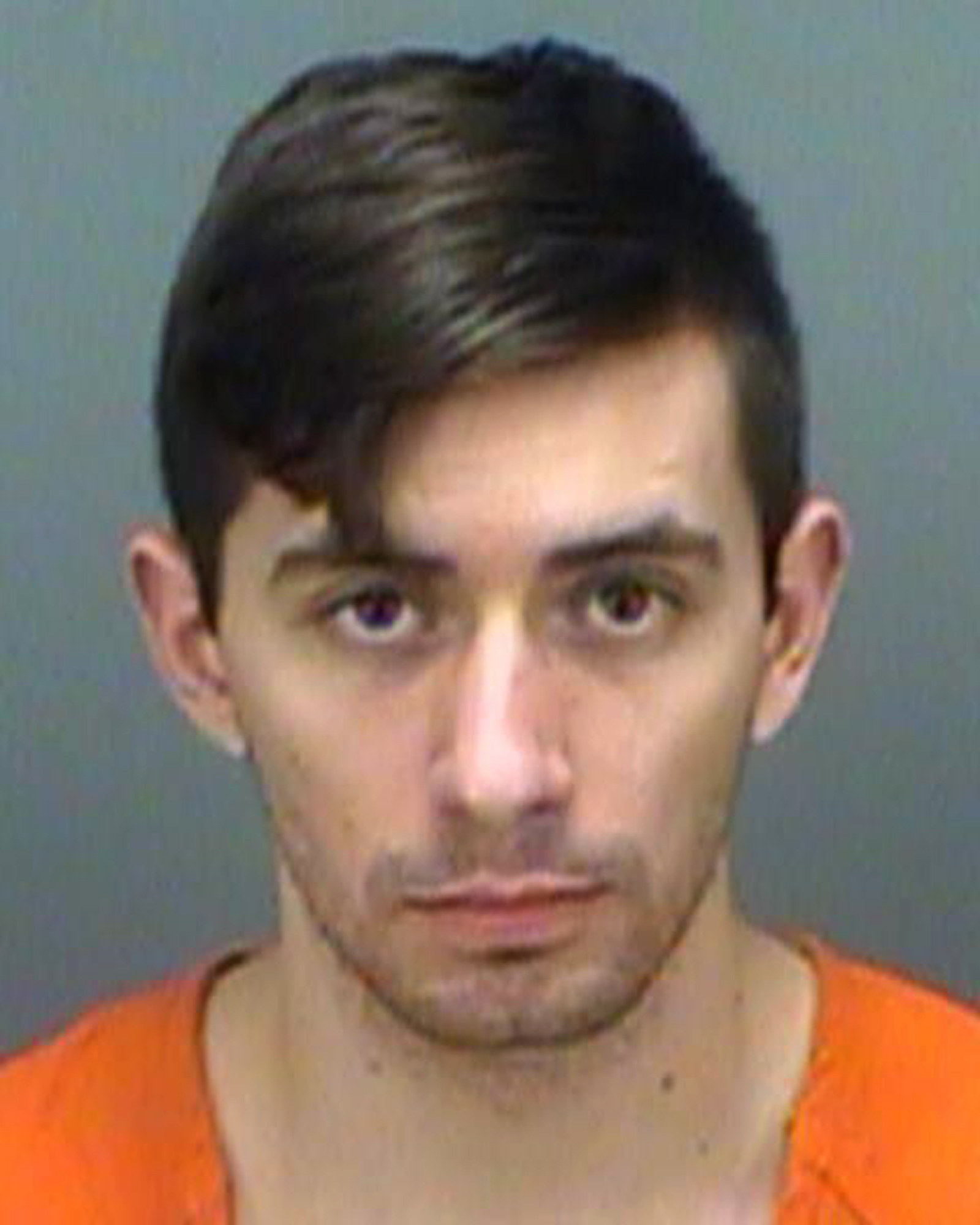
A search of his home led to a breakthrough in the Lorenzo case when agents discovered Lang’s laptop. A book draft titled “Craig’s life,” which included passages about fighting in Ukraine, was saved on the computer. In the document, agents found further evidence that they would use against Lang and Zwiefelhofer in Florida.
Zwiefelhofer voluntarily agreed to speak to federal agents, according to a US extradition request for Lang. He admitted he was in Florida when the Lorenzos were killed and had planned to travel from Miami to Venezuela and fight the government there. He also said Lang was with him in Florida.
But Zwiefelhofer denied setting up the Armslist ad — even though it was tied to an email he used and its associated Facebook page, which featured a profile photo of him in the La Quinta Inn hotel room in Miami. He also said he never traveled to the Galleria complex in Estero.
Zwiefelhofer has pleaded not guilty to murdering the Lorenzos; through his lawyer, D. Todd Doss, Zwiefelhofer declined a request for an interview. Prosecutors have argued that Zwiefelhofer poses a serious flight risk and danger to the community, and he remains in custody, awaiting a June 1 trial date in Fort Myers, Florida.
Prosecutors for the US Attorney’s Office for the Middle District of Florida have suggested they will seek the death penalty for both Zwiefelhofer and Lang.
In Kyiv — mindful of Zwiefelhofer’s arrest, which he had read about online, and a ramped-up effort by US authorities to track him down — Lang got busy putting down roots and starting a new life. He was, he would later tell a Kyiv court, hoping to gain Ukrainian citizenship.
While working as a freelance English-language tutor, he met Anna Osipovich, an English-speaking Ukrainian to whom he quickly became engaged. In interviews in September and October 2019, Osipovich told me that Lang rarely spoke with her about his past and wasn’t specific when he did. She said Lang told her he had no part in the Florida killings. She also said the two wanted to get married because she was pregnant.
But in order to marry, Lang needed a fresh stamp in his passport; he had stayed in Ukraine long past the 90 days Americans are allowed without a visa. So in August 2019, he left the country for a short trip to Moldova. Upon Lang’s return, an Interpol notice was triggered that said he was wanted by the US on charges of murder in Florida, and Ukrainian authorities detained him.
After more than a month in a detention center, he was released on his own recognizance. He could not leave the country, since his passport was being held by Ukrainian authorities, but he was free to continue his life in Kyiv.
That’s where I found Lang earlier this year, on Feb. 23, along with Osipovich, who had recently given birth to the couple’s baby boy. They had come to Kyiv’s main appeals court to continue fighting a decision by the country’s Prosecutor General’s Office to extradite Lang to Florida, where family members of the Lorenzos await closure.
The family member I spoke to, who has been monitoring the extradition proceedings closely, said she doubts Lang will be returned to Florida. “I wish. I hope. But I don’t have much faith in the Ukrainian justice system,” they said through tears. “We don’t want the death penalty; we just want him to pay.”
At the courthouse, Lang declined to answer questions about his alleged role in the killings when I approached him. He avoided making eye contact by turning in circles, hiding behind his lawyers, and staring into the corner of an elevator as it climbed to the fifth floor of the courthouse.
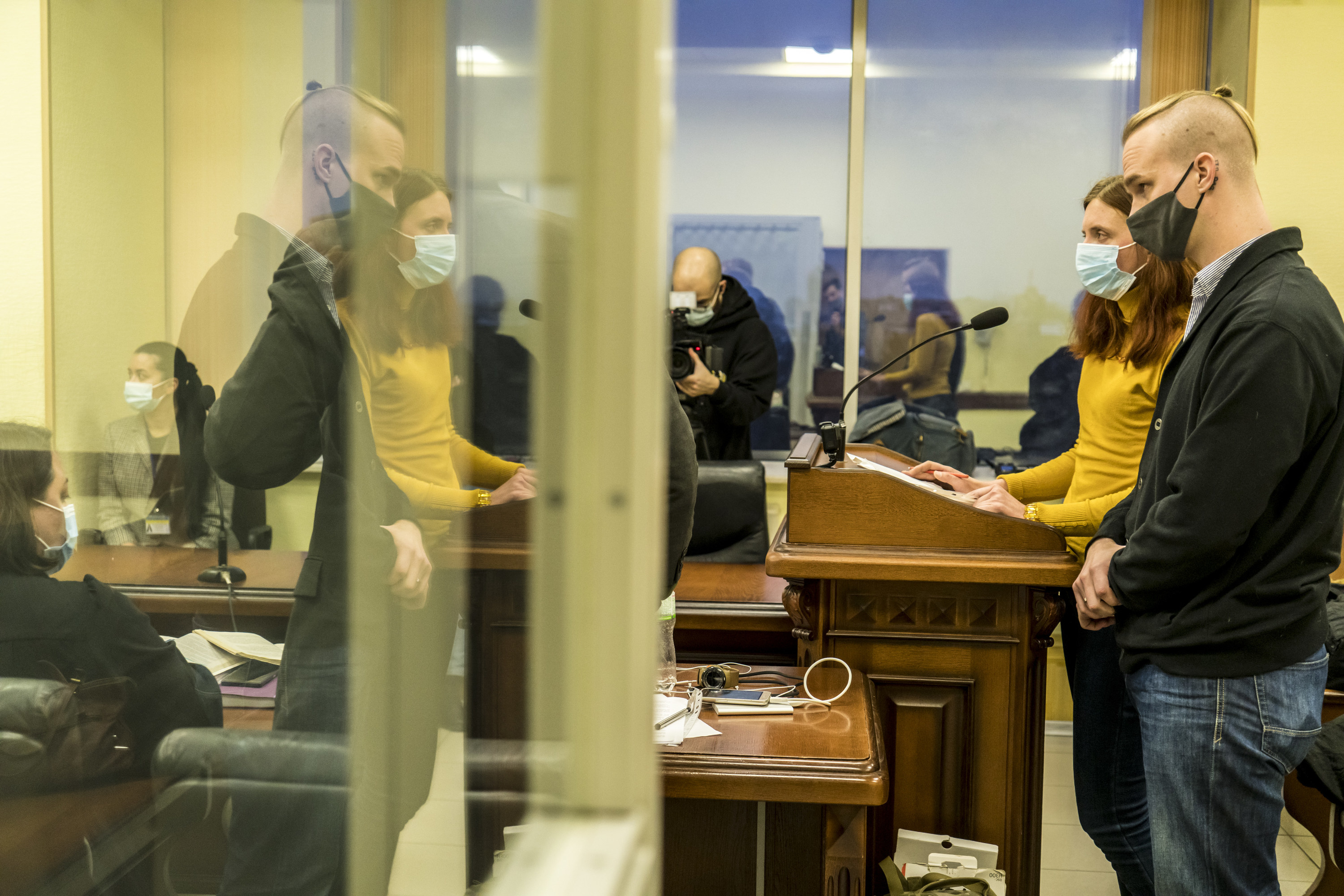
He had shaved off his beard and cut his hair into an oseledets, a hairstyle favored by Ukraine’s ancient Cossack warriors that features a long lock of hair atop an otherwise bare head. Today it’s popular among the country’s far-right nationalists. On the day of his hearing, his lock was tied up with a yellow rubber band, and he wore a face mask adorned with the red and black — blood and soil — colors associated with Ukrainian nationalists. Featured prominently on his coat sleeve was a patch with the number “88,” a well-documented white supremacist code for “Heil Hitler.”
Lang’s case is not just a matter of extraditing an accused killer. For Ukraine, it’s an issue of what to do with a man who volunteered and risked his life to defend the country, and who could face capital punishment — abolished in Ukraine in 2000 — if he returns to the US.
“We don’t want the death penalty; we just want him to pay.”
The far-right paramilitary units he fought with may be extreme in the eyes of the West, but to many Ukrainians their members are patriots whose wartime sins have been forgiven. Some foreigners who served in the units have received Ukrainian citizenship for their service.
All this was in play in the courtroom, where Lang sat beside a translator and twiddled his thumbs throughout the tense hearing. Sometimes he shot a worried glance at his fiancé. Seated behind him, she texted play-by-play to someone on her phone, the case of which was a brown teddy bear.
Speaking in a deep and slow North Carolina drawl, Lang proclaimed his innocence, asserted that he was a freedom fighter who believed in and volunteered to defend Ukraine’s independence. He added that he was a father and provider for his new family.
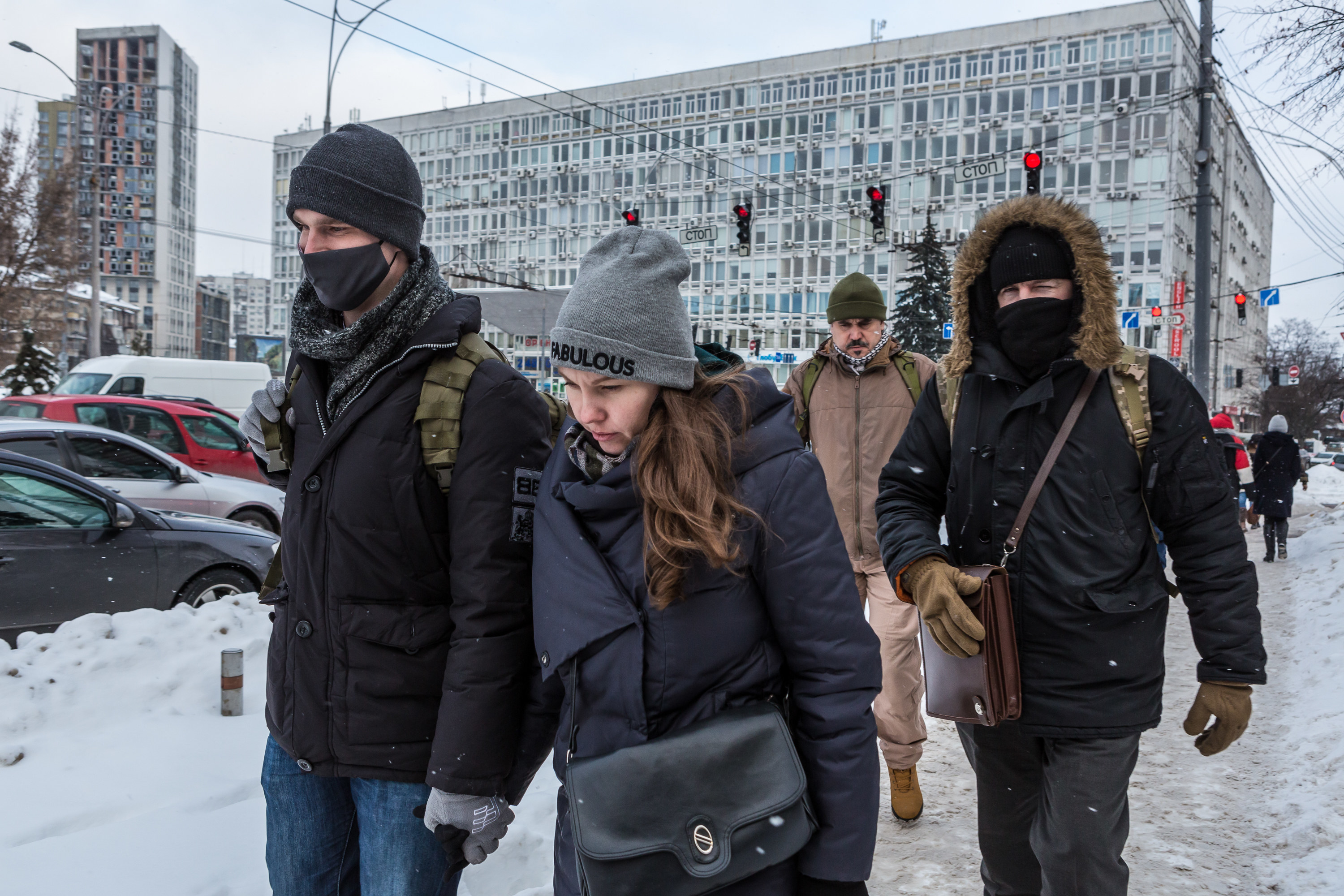
He never explicitly denied killing the Lorenzos. He said he was “an asylum-seeker” and claimed “it would violate all the UN conventions” to extradite him to Florida, where he could face the death penalty. He contended that in the wake of the Jan. 6 attack on the US Capitol, he was being targeted by the federal government for his political beliefs.
Lang went on, claiming he could be prosecuted just “for choosing to come to Ukraine, to fight for Ukraine.” He said the US had “refused to give a guarantee to not prosecute” him for things he did while fighting with extremist paramilitaries.
“Any separatist or Russian soldier that I have killed would be a murder charge. Understand that any soldier I may have captured would be a kidnapping charge,” he said.
After a short deliberation, the lead judge explained the panel’s decision. It would put Lang’s extradition on hold and give him a hearing to determine his status as an asylum-seeker. One of Lang’s lawyers jubilantly threw his fist in the air.
Down in the courthouse lobby after the decision, Lang was greeted by a dozen Right Sector members. Most were dressed in camouflage fatigues and combat boots. One wore a patch with the symbol of a Ukrainian neo-Nazi organization on his arm. The group chanted “Glory to heroes!” and other Ukrainian nationalist slogans, while some hugged Lang.
But the celebration would be premature. Three weeks later, his plea for asylum was denied, and the court upheld the order to extradite him to Florida.
In a last-ditch maneuver, Lang’s lawyers managed to get the European Court of Human Rights to stay his extradition until it could review the case. Another court hearing is scheduled for April 22 to determine if he could be taken back into Ukrainian custody. The question of whether he will be sent to Florida for trial remains open.
Outside the courtroom in March, Lang saw a woman from the US Embassy who was monitoring the case. He shouted her down, assuming she was an FBI agent.
His voice shook with rage as he said, “There’s no such thing as justice in the United States.” ●
Christopher Miller reported from Miami; Estero, Florida; and Kyiv. Roman Stepanovych contributed reporting from Kyiv.
Correction: Brian Boyenger served in Ukraine's Armed Forces. An earlier version of this story misstated which group he fought with in the country.

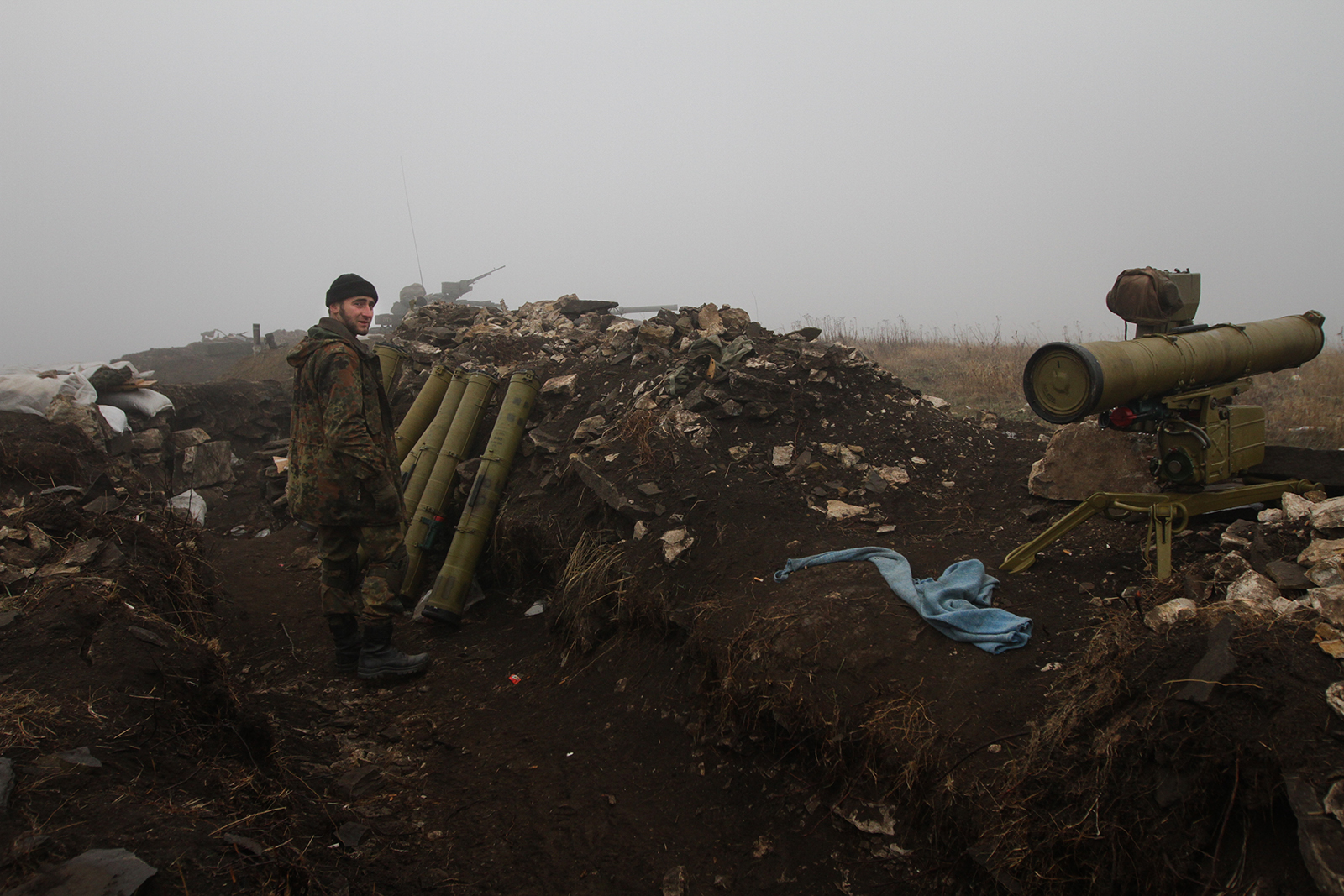
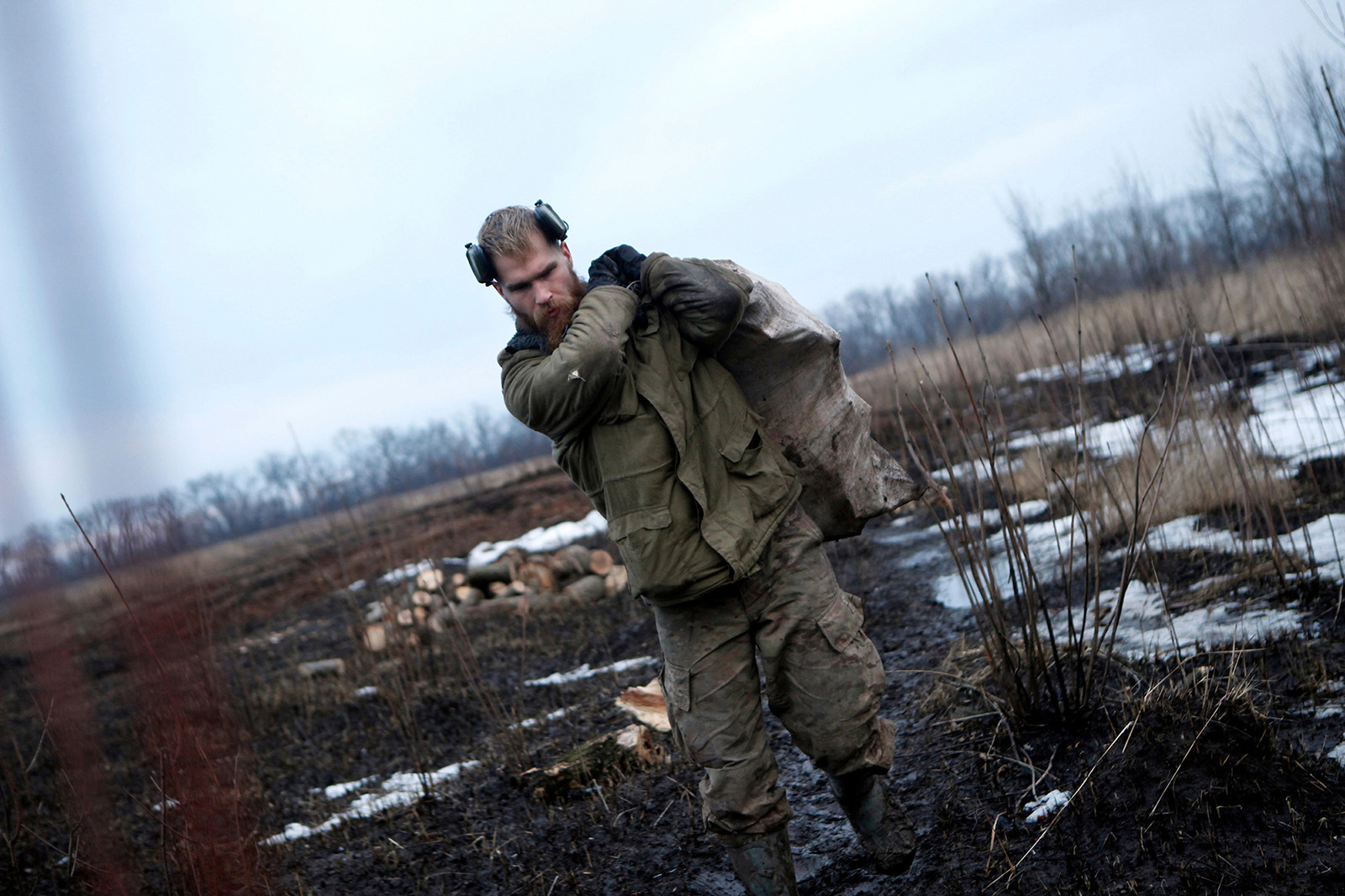
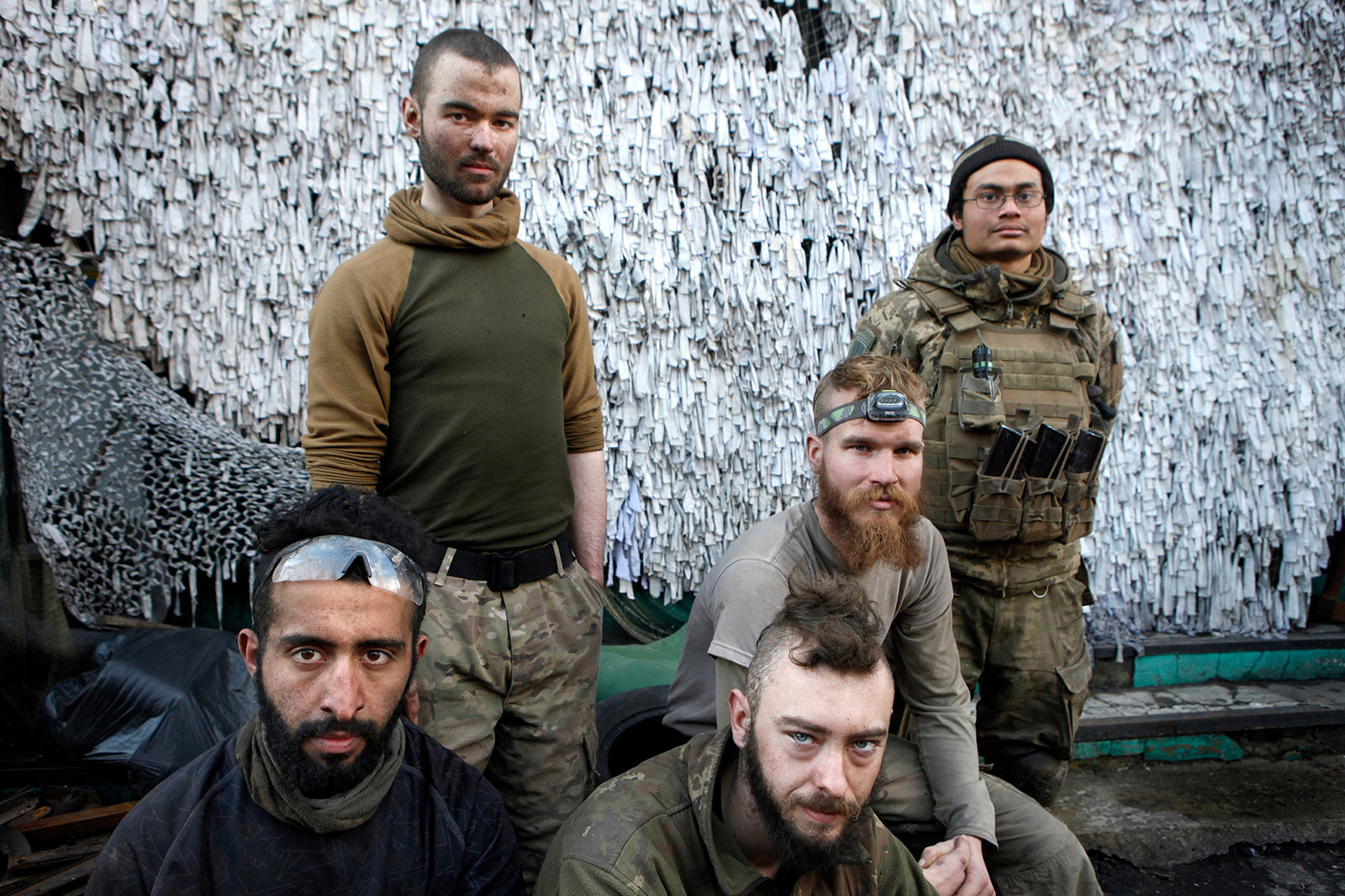

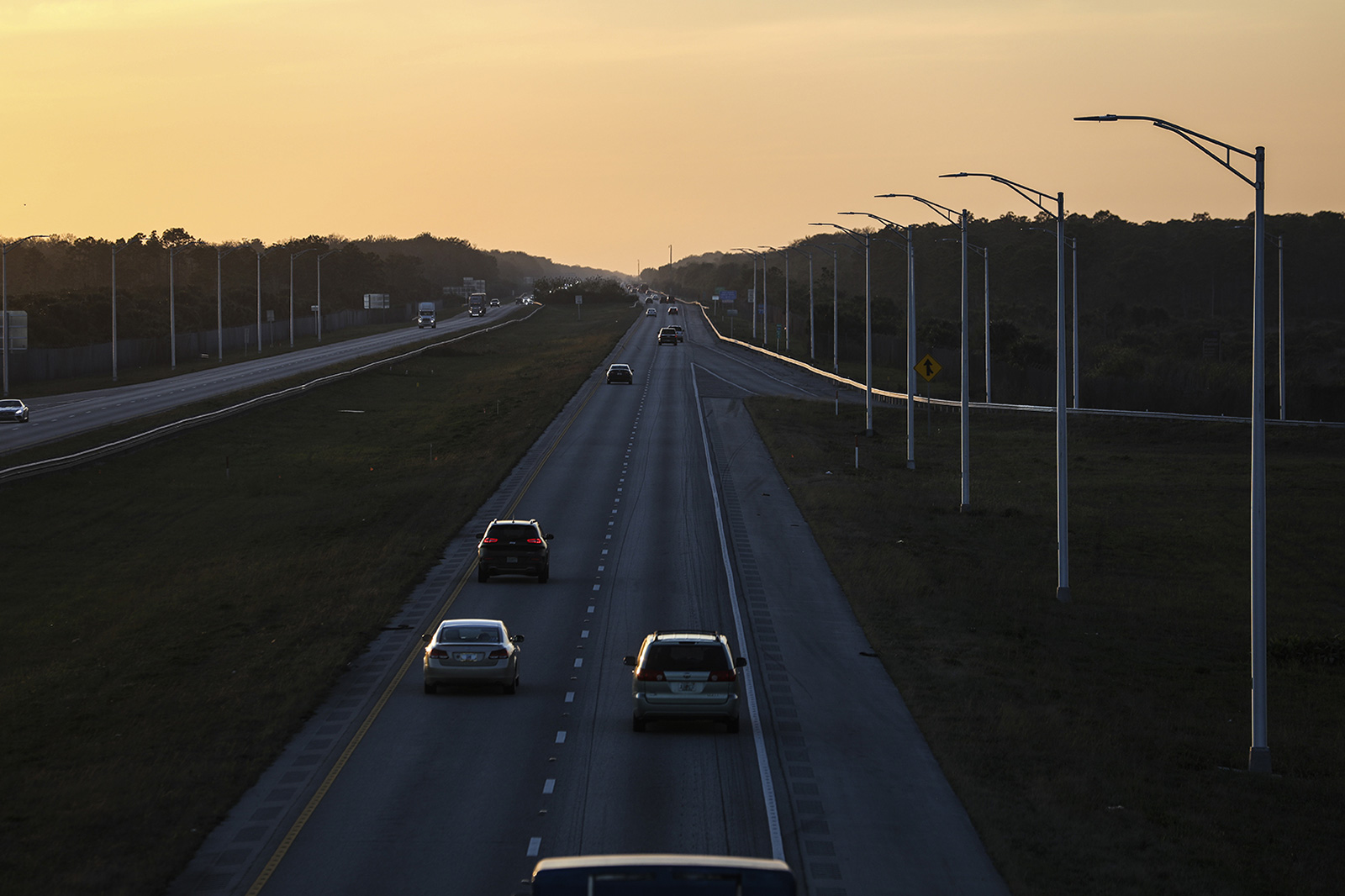
-lo.jpg)
